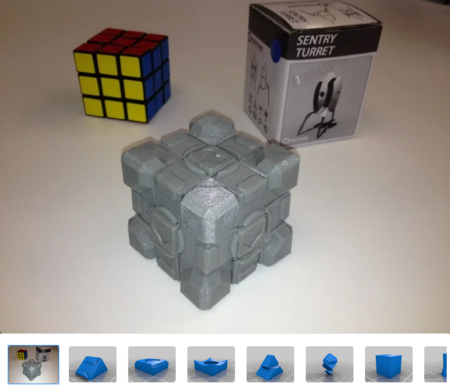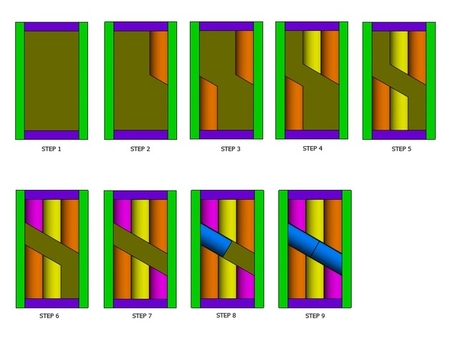1x2x3 rhino rompecabezas en 3D para imprimir
8591 Visualizaciones 2 Me gusta 0 Descargas realizadas Descarga aqui la pieza desde 3dforprint
He importado en Tinkercad, junto con el complemento de los orificios de las clavijas y comenzó a cortar y rebanar.
Después de discutir el diseño con mis hijos, nos instalamos en la división de las piernas para hacer las orientaciones más interesante. Siendo el 5 y el 9, su parte favorita de jugar con este rompecabezas es lo que es "olor de su propio culo".
Al darse cuenta de que las piernas necesitan apoyo y que si va a imprimir el medio de piezas, con el apoyo, sería un momento de diversión de la limpieza de los agujeros, decidí diseño personalizado de apoyo para las piezas de modo que usted no necesita usar su segmentación del apoyo.
Resultó bastante bien. se ve genial y se convierte fácilmente. Como una vuelta de tuerca (mal juego de palabras) decidimos girar la forma en que la cabeza está en rodajas.
Diseñador
joefeDescripción del modelo 3d
Siempre he sido aficionado de rubik, rompecabezas estilo y siempre había planeado en el diseño de uno de los míos. He impreso el lindo Ozo 1x2x3 pu...zzle oso para mi hija el otro día, que ella amaba, pero esto crea un problema para mis hijos. Que ganas de uno, pero quería ser un animal diferente. Me he encariñado mucho de ser capaces de mostrar a mis hijos que la impresión en 3D me ofrece la capacidad de crear objetos personalizados y juguetes, así que acepté el reto. Fuimos a buscar a través de thingiverse buscando modelos animales para empezar, mientras que la discusión acerca de lo animal que quería. Nos instalamos en el Rhino modelo YahooJapan y empecé a trabajar.He importado en Tinkercad, junto con el complemento de los orificios de las clavijas y comenzó a cortar y rebanar.
Después de discutir el diseño con mis hijos, nos instalamos en la división de las piernas para hacer las orientaciones más interesante. Siendo el 5 y el 9, su parte favorita de jugar con este rompecabezas es lo que es "olor de su propio culo".
Al darse cuenta de que las piernas necesitan apoyo y que si va a imprimir el medio de piezas, con el apoyo, sería un momento de diversión de la limpieza de los agujeros, decidí diseño personalizado de apoyo para las piezas de modo que usted no necesita usar su segmentación del apoyo.
Resultó bastante bien. se ve genial y se convierte fácilmente. Como una vuelta de tuerca (mal juego de palabras) decidimos girar la forma en que la cabeza está en rodajas.




















